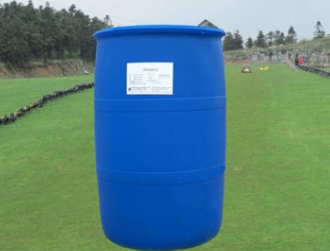Generally speaking, the cloud point of surfactant aqueous solution can indicate the ability of its hydrophilic group to form hydrogen bonds with water molecules. At the same concentration, the longer the EO chain of non-ionic surfactant, the higher the cloud point of its aqueous solution. This is mainly because the EO chain can form hydrogen bonds with water molecules. The longer the EO chain is, the more hydrogen bonds are formed, and the more energy is required to destroy these hydrogen bonds. Therefore, higher temperature is required to completely destroy the close relationship between surfactants and water molecules. Generally, with the increase of surfactant concentration, the cloud point first decreases and then increases. This phenomenon can be explained according to the viewpoint that the shape of micelles changes with concentration in aqueous solution. Before the cloud point reaches a low value, the increase of surfactant concentration will only increase the number of micelles, increase the probability of collision with each other, and increase the possibility of coalescence. Therefore, it is easy to cause separation from the water phase and reduce the cloud point. Then, the shape of the micelles began to change, from spherical to rod-shaped, the radius of gyration of the micelle particles increased, the viscosity of the solution increased, and the probability of the micelles meeting each other greatly decreased, resulting in the rise of cloud point.

The addition of ionic surfactant increases the cloud point of non-ionic surfactant. When the concentration of added surfactant is fixed, the lower the concentration of non-ionic surfactant, the higher the charge density of the mixture formed by the two, the greater the repulsion between micelles, and the higher the cloud point. Under the same concentration of non-ionic surfactant, when the concentration of added ionic surfactant increases, the general cloud point also increases. This is also due to the increase of charge density on the surface of micelles. Therefore, the charge density of mixed micelles formed by non-ionic surfactants and ionic surfactants determines the cloud point. The higher the charge density, the higher the cloud point.
The influence of cosurfactants such as alcohols and organic acids on cloud point is also the result of the joint action of two factors. The hydrophilic group of alcohol can form hydrogen bond with water, which limits the micellization of surfactant and increases the cloud point; At the same time, alcohol solubilizes in the interfacial layer and barrier layer of micelles, forms hydrogen bonds with water, increases the total water content of micelles, and also increases the cloud point. Alcohol solubilizes in the barrier layer, the hydrophilic group is close to the polar head of the surfactant, and the space hindrance and the formation of hydrogen bond with ether reduce the hydration capacity of the surfactant and reduce the cloud point.
Methanol and ethanol have short carbon chains and strong hydrophilicity. Most of them are soluble in water in the micelle solution, and some of them are adsorbed on the micelle interface and barrier layer, thus raising the cloud point; For alcohols with carbon number greater than 4, their hydrophilicity is poor, and most of them are solubilized in the barrier layer, reducing the cloud point. For polyols, such as ethylene glycol, glycerol, glucose, etc., the more hydroxyl they have, the easier it is to form hydrogen bonds with surfactant ether bonds, reducing their hydration and cloud point.